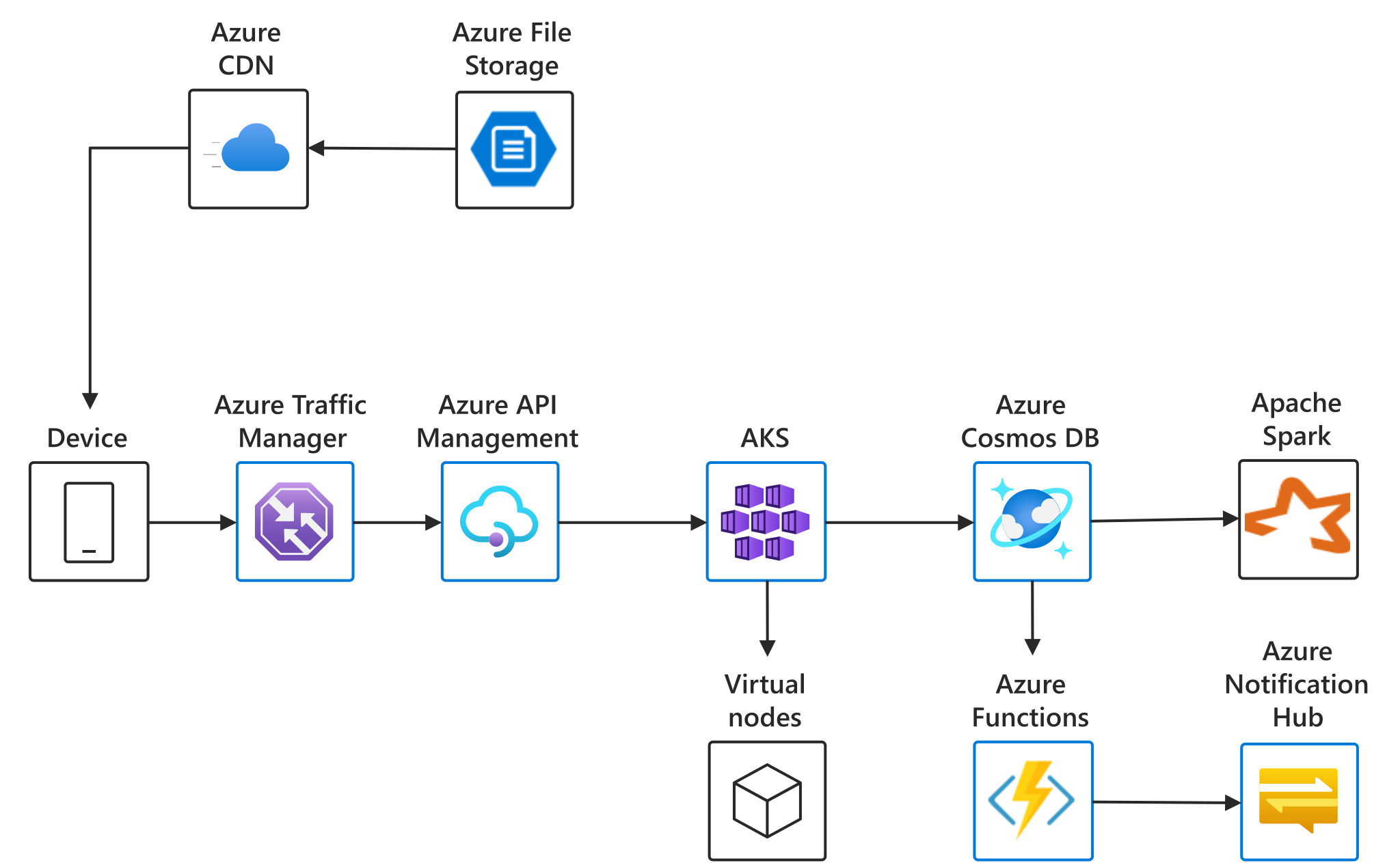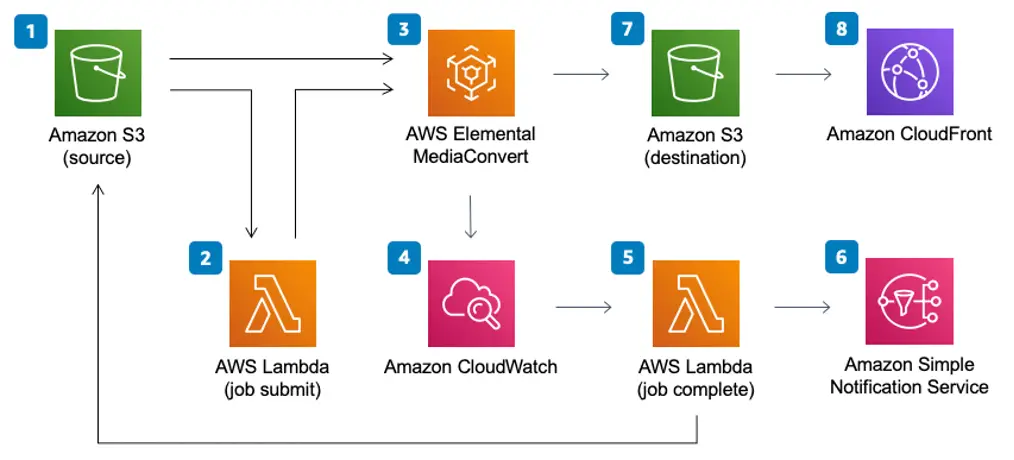Optimizing CDN Architecture for Video-on-Demand (VOD) Services

1. Choose the Right CDN Provider:

- Select a provider with a global network and high bandwidth capacity.
- Consider their caching capabilities and ability to handle peak traffic.
- Assess their pricing models and technical support.
2. Plan for Dynamic Caching:

- Utilize dynamic caching techniques to store frequently accessed content closer to end-users.
- Implement caching policies that prioritize high-demand videos and optimize cache performance.
- Monitor cache hit rates and adjust policies accordingly.
3. Implement Adaptive Bitrate Streaming (ABR):
- Enable ABR to deliver video at different bitrates based on network conditions.
- Segment videos into smaller chunks for efficient caching and fast loading.
- Use chunk-aware caching to minimize buffering and improve user experience.
4. Optimize Video Encoding:
- Encode videos in multiple resolutions and bitrates to accommodate different devices and network speeds.
- Use efficient codecs, such as H.264 or H.265, to achieve high quality at low bitrates.
- Consider open source encoding tools like FFmpeg or OBS for cost-effective options.
5. Configure Edge Servers:
- Deploy edge servers in strategic locations close to end-users.
- Enable features like Advanced Persistent Memory (APM) for faster content delivery.
- Optimize TCP settings, such as congestion control and window size, for efficient data transfer.
6. Implement Load Balancing:
- Use load balancing techniques to distribute traffic across multiple CDN servers.
- Implement DNS round-robin or load balancers to ensure uptime and minimize latency.
- Monitor server load and adjust load distribution accordingly.
7. Integrate with Players:
- Choose video players that support adaptive bitrate streaming and caching.
- Integrate CDN URL generation into the player to automatically optimize video delivery.
- Use player analytics to monitor video performance and identify areas for improvement.
8. Monitor and Analyze Performance:
- Track metrics such as cache hit rate, buffering rate, and video quality.
- Use data analytics to identify bottlenecks and optimize CDN configuration.
- Perform regular load testing to ensure stability and scalability.
9. Consider Geographic Distribution:
- Deploy edge servers in regions where your audience is concentrated.
- Use geo-blocking or geo-targeting to restrict access to certain content based on location.
- Optimize routing to minimize latency and improve user experience.
10. Implement Redundancy:
- Build a redundant CDN architecture to ensure high availability.
- Use multiple providers or configure failover mechanisms to prevent outages.
- Implement automated backup and recovery systems to minimize downtime.## Optimizing CDN Architecture for Video on Demand (VoD) Services
Executive Summary
Video on Demand (VoD) services have become increasingly popular in recent years, as they offer a convenient and affordable way for users to access a vast library of content. However, VoD services can be complex and challenging to optimize, especially when it comes to CDN architecture. By following the best practices outlined in this article, VoD providers can improve the performance and reliability of their services, while also reducing costs.
Introduction
VoD services deliver video content to users over the internet, and CDN (Content Delivery Network) architecture plays a critical role in ensuring that this content is delivered quickly and reliably. A well-optimized CDN architecture can reduce buffering, improve video quality, and reduce the overall cost of delivery.
FAQs
1. What is a CDN?
A CDN is a distributed network of servers that cache content closer to end users, reducing the distance that content has to travel and improving delivery performance.
2. Why is CDN architecture important for VoD services?
VoD services deliver large amounts of video content, which can strain network resources and lead to buffering and other performance issues. A well-optimized CDN architecture can help to alleviate these issues by distributing content more efficiently.
3. What are the key considerations for optimizing CDN architecture for VoD services?
Key considerations include:
- Network topology: The physical layout of the CDN network, including the location and interconnectedness of servers.
- Content caching: How and where content is cached within the CDN network.
- Load balancing: Distributing traffic across multiple servers to improve performance and reliability.
- Security: Protecting content from unauthorized access and distribution.
Subtopics
1. Network Topology
The network topology of a CDN is critical for performance and reliability. The following are important considerations:
- Server location: Servers should be located in close proximity to end users to reduce latency and improve delivery speeds.
- Interconnection: Servers should be interconnected with high-speed links to ensure fast and reliable data transfer.
- Redundancy: The network should be designed with redundant paths and servers to ensure that content can still be delivered in the event of an outage.
2. Content Caching
Content caching is another important aspect of CDN optimization. The following are key considerations:
- Caching strategy: Determine which content should be cached and for how long to improve performance and reduce bandwidth consumption.
- Cache location: Content should be cached as close to end users as possible to minimize latency.
- Cache size: The size of the cache should be sufficient to store the most popular content, while also considering cost and maintenance factors.
3. Load Balancing
Load balancing is essential for distributing traffic across multiple servers and improving performance. The following are important considerations:
- Load balancing algorithm: Choose an algorithm that effectively distributes traffic based on factors such as server load, latency, and content availability.
- Health monitoring: Continuously monitor server health and automatically adjust load balancing to ensure that content is delivered from the most reliable servers.
- Fault tolerance: The load balancing system should be designed to handle server failures and automatically reroute traffic to other servers.
4. Security
Security is critical for protecting content from unauthorized access and distribution. The following are important considerations:
- Encryption: Encrypt content during transmission to prevent interception and theft.
- Access control: Implement access control mechanisms to restrict who can access and distribute content.
- Digital Rights Management (DRM): Use DRM technologies to protect content from unauthorized playback and distribution.
5. Monitoring and Analytics
Monitoring and analytics are essential for optimizing CDN performance. The following are important considerations:
- Performance monitoring: Monitor key performance metrics such as latency, buffering, and video quality to identify potential issues.
- Analytics: Collect and analyze data on user behavior, content consumption, and CDN performance to identify areas for improvement.
- Reporting: Generate reports on CDN performance and usage to track progress and make informed decisions.
Conclusion
Optimizing CDN architecture for VoD services is essential for improving performance, reliability, and cost-effectiveness. By considering the key factors discussed in this article, VoD providers can design and implement CDN architectures that meet the demands of their users and drive business success.
Keyword Tags
- CDN architecture
- Video on Demand (VoD)
- Content Delivery Network (CDN)
- Network topology
- Content caching
